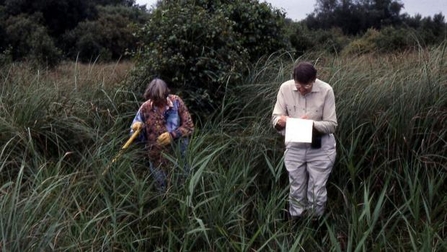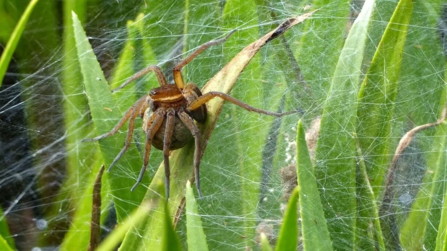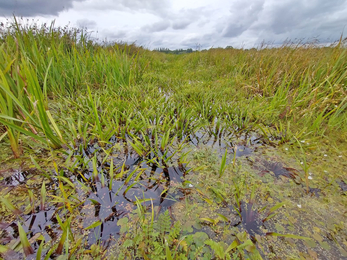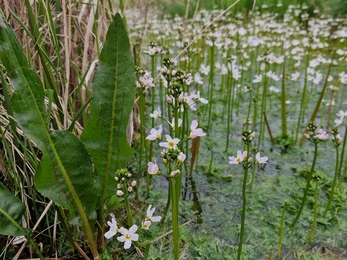1. The fen raft spider (Dolomedes plantarius) is a native, semi-aquatic spider that was first discovered in the UK at Redgrave & Lopham Fen National Nature Reserve - at the source of the River Waveney - in 1956 by arachnologist Dr Eric Duffey.

Arachnoligist Eric Duffey in the Waveney Valley - British Arachnological Society
2. One of the largest spiders in the UK, the fen raft spider can have a leg span of up to 7cm. The species is easily recognisbale with its chocolate-brown body and distinctive cream-white stripes along each side of its body.
3. As their name suggests, these spiders can literally walk on water. The Dolomedus genus of large spiders - that the fen raft spider belongs to - are sometimes called fishing spiders, dock spiders, and wharf spiders.

Fen raft spider - Helen Smith
4. The diet of the fen raft spider is mostly made up of other invertebrates such as small spiders, dragonfly larvae and pond skaters, however the spiders have been known to catch small vertebrates such as fish and tadpoles.
5. Fen raft spiders are very diligent mothers. They first carry their young inside an egg sac, which they carefully temperature-control by holding up to the sun to warm up or placing in the water to cool down. When the young spiderlings are ready, the mother will bite the sac to release them into her nursery web, which she will guard until the young disperse.

A fen raft spider carrying her egg sac - Helen Smith
6. Water-solider is a favourite plant of fen raft spider, particularly for building their webs. This rare plant grows submerged in ponds and open water and breaks through the water's surface in summer,- looking like the top of a pineapple.
7. These spiders are a wetland species that depend on a reliable, year-round supply of unpolluted water in either fen habitat and grazing marsh ditches. These habitats have declined in extent and quality over many decades which is the most significant cause the rarity of these spiders.
8. A successful translocation collaboration between Suffolk Wildlife Trust and Sussex Wildlife Trust has helped to save these critically endangered spiders. Baby fen raft spiders were introduced at Castle Marshes nature reserve near Lowestoft in 2010 and the population has slowly grown along the Waveney Valley.
9. At Carlton Marshes nature reserve, much of dyke network criss-crossing the fen and marsh habitats are managed to create the optimal conditions for fen raft spider for all stages of their life cycle.
10. Fen raft spider are still a rare and endagered species, only found at 7 wetland sites in the UK, including Carlton Marshes and Redgrave & Lopham Fen. They remain 'vulnerable' to extinction on both the global and British IUCN Red List - plus they are listed as a Priority Species in England under the Environment Act.





